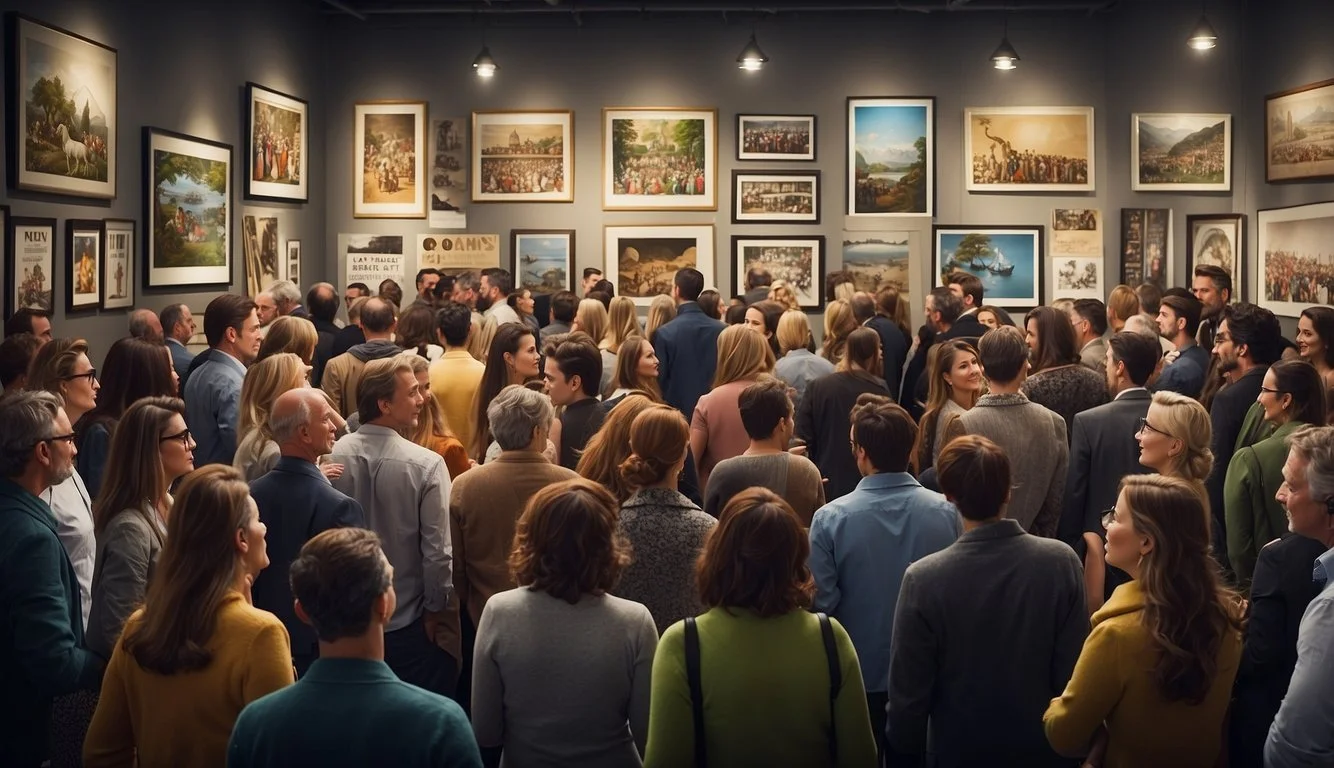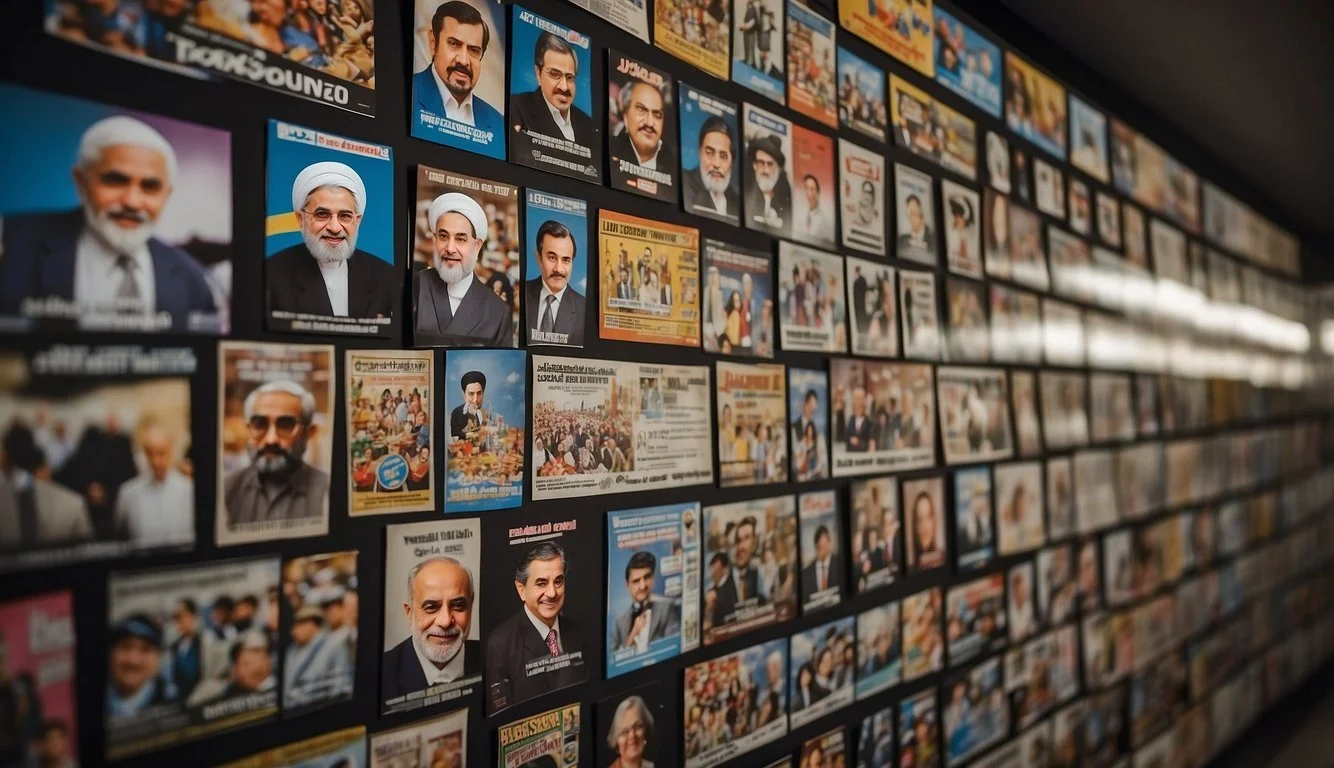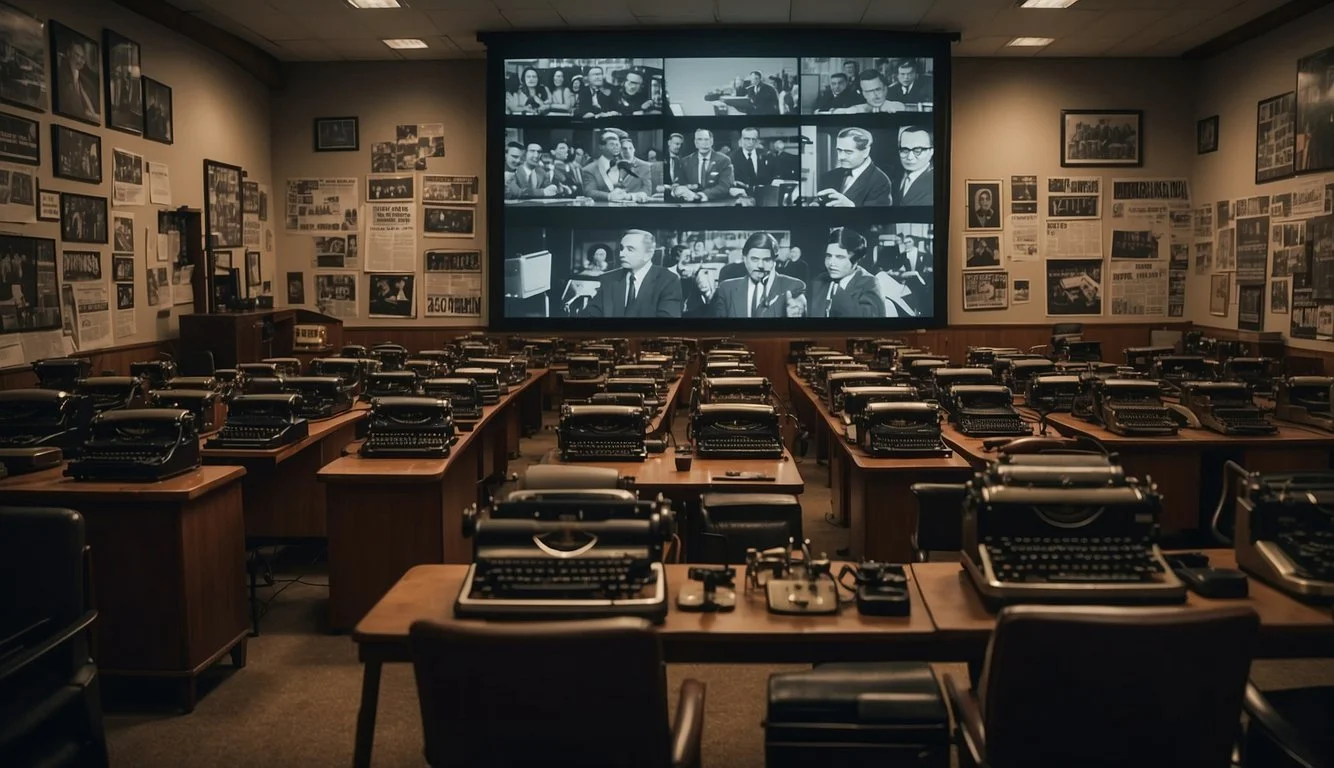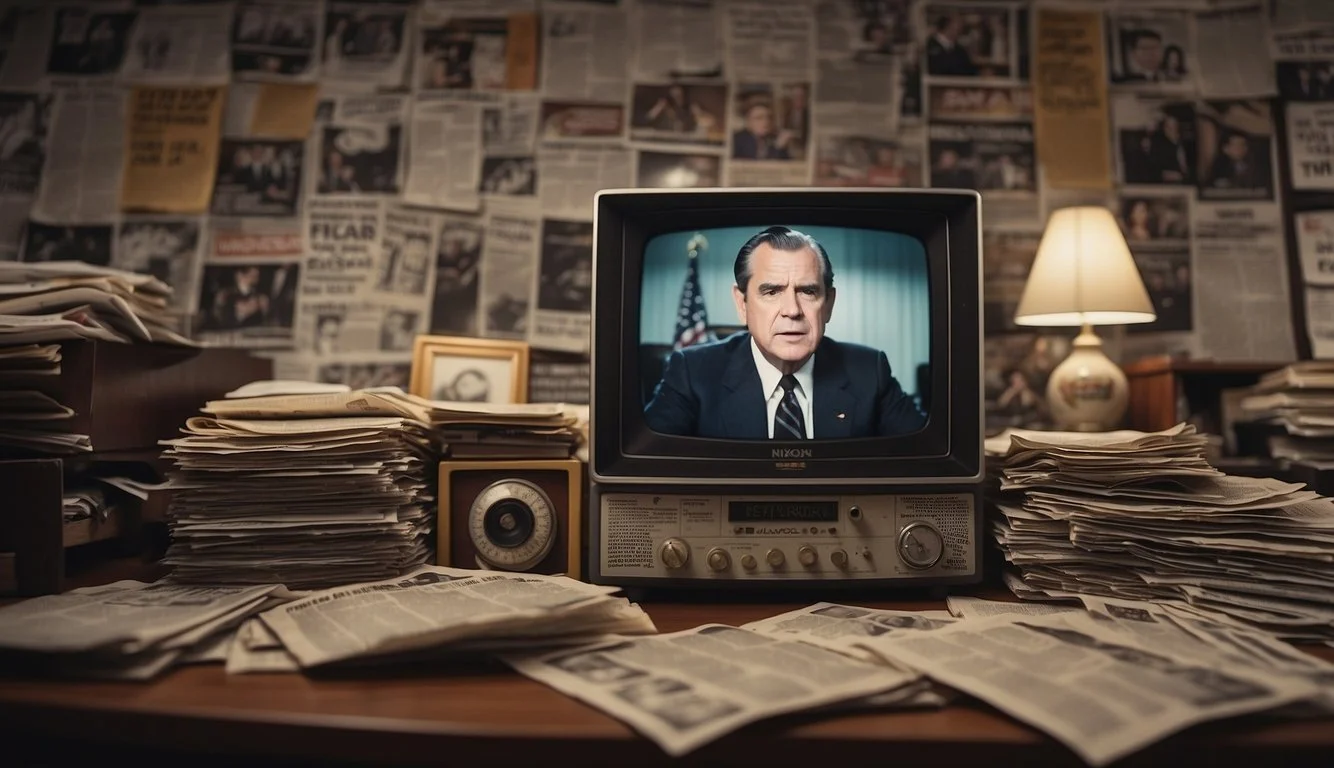Documentaries on the Impact of Political Cartoons and Satire
A Deep Dive into Their Influence
Political cartoons and satire hold a unique place in the landscape of media and art, where they blend humor and critique to highlight societal and political issues. This medium has flourished across centuries, serving not only as a tool for entertainment but also as a powerful form of political commentary.
Documentaries exploring this theme provide valuable insights into how these artistic expressions influence public opinion and challenge authority. These films often shed light on the creative processes behind the cartoons and the historical contexts that shape their content, offering viewers a deeper appreciation of the impact of satire in the political arena.
1) The Cartoons That Shook Iran
In Iran, political cartoons have long been a unique and powerful form of resistance against authoritarianism. These cartoons, often filled with satire, critique the social and political climate, offering a voice to dissenters.
One historical example is Molla Nasreddin, a satirical magazine that inspired many future Iranian artists. Even after its end in 1907, its spirit of satire lived on.
Modern-day cartoonists in Iran continue this tradition despite facing significant persecution. Figures like Mana Neyestani use their art to delicately express dissent and critique the government.
The impact of these cartoons is profound. They simplify complex political issues, making them accessible and engaging to the public. Through humor and satire, these artists provide a unique lens to view and critique Iranian society.
2) Pravda: Soviet Satire
Pravda, the official newspaper of the Communist Party of the Soviet Union, played a significant role in disseminating political ideas and propaganda.
As a state-run publication, Pravda often featured serious commentary aligned with Communist policy.
Krokodil, a satirical magazine published by Pravda, became notable for its political cartoons. These cartoons provided a vehicle for state-sanctioned satire, allowing for limited critique within a controlled framework.
Running from 1922 onwards, Krokodil achieved substantial impact, distinguished by its wide circulation. It featured contributions from both professional and non-professional artists.
Unlike Pravda's more earnest tone, Krokodil used humor and satire directed both at domestic issues and international affairs. This unique approach made it an influential source of Soviet graphic satire.
In contrast to other media, Krokodil's political cartoons allowed for a visual form of critique, which resonated strongly with the Soviet public. Despite its satirical nature, the publication maintained a clear alignment with state ideology.
This blend of humor and political commentary made Krokodil a vital part of Soviet media, distinct from the more rigid tone of Pravda itself. Its legacy remains significant in the study of Soviet-era satire.
3) Charlie Hebdo: A Legacy of Defiance
Charlie Hebdo, a French satirical magazine, has been a cornerstone of political satire and cartooning since its inception. Known for its provocative and often controversial content, it pushes boundaries with sharp commentary on politics, religion, and various social issues.
The magazine's irreverent take on sensitive topics has sparked global debates on free speech and the limits of satire. Its cartoons are emblematic of France's strong tradition of secularism, where no subject is off-limits.
Charlie Hebdo has faced severe backlash, including a tragic attack in January 2015 that claimed the lives of several staff members. Despite the risks, the magazine continues its mission with unyielding resolve.
Political cartoons in Charlie Hebdo are more than just illustrations; they are tools of social and political commentary. The boldness with which the magazine addresses taboo subjects underscores the role of satire in challenging societal norms and authority figures.
The magazine's resilience in the face of adversity has cemented its status as a symbol of defiance. By maintaining its editorial stance without bowing to external pressures, Charlie Hebdo has become a bastion of creative freedom and a defender of free expression.
4) The Punch: British Satire on Governance
Punch, or The London Charivari, was a seminal British weekly magazine established in 1841. Founded by Henry Mayhew and Ebenezer Landells, it became an influential platform for political satire.
Political cartoons in Punch aimed at critiquing and lampooning those in power. The artistry and wit condensed complex political situations into accessible and often humorous illustrations.
Punch’s satire played an essential role in shaping public opinion. It scrutinized governmental policies and actions, ensuring that no public figure was immune to its critical gaze.
Caricatures and sharp commentaries highlighted societal issues and political missteps effectively. Through satire, Punch exposed the absurdities and inconsistencies within the governance of the time.
The magazine’s legacy is evident in its enduring influence on both British culture and the wider world of political satire.
5) Political Cartoons of the Civil Rights Movement
Political cartoons played a significant role in the Civil Rights Movement. These illustrations offered powerful critiques of social injustices and racial inequalities, serving both as a form of protest and education.
Herblock, a prominent cartoonist, was known for his bold depictions of civil rights issues. His work highlighted the systemic racism that persisted even after landmark decisions like Brown v. Board of Education.
Another influential cartoonist, Thomas Nast, used his artistry to advocate for national unity and equality. Although his work predates the Civil Rights Movement, Nast's legacy inspired future generations of cartoonists to use satire as a tool for social change.
Cartoons often depicted key events such as the Selma Voting Rights Campaign. These illustrations brought national attention to the struggles African Americans faced, emphasizing the violent resistance they encountered.
The impact of these political cartoons extended beyond mere commentary. They helped shape public opinion by making complex issues more accessible and compelling. Through a mix of satire and stark imagery, cartoonists of the era contributed to the broader dialogue on civil rights and equality.
Political cartoons from this period remain a vital historical record, reflecting the tensions and aspirations of a nation grappling with profound change.
6) Doonesbury and the Vietnam War Debate
Garry Trudeau’s Doonesbury played a significant role in discussing the Vietnam War, bringing the complexities and emotional weight of the conflict into public consciousness. The strip often highlighted the personal experiences of soldiers and their families, providing a unique lens through which many Americans viewed the war.
The comic strip adeptly combined humor with serious commentary, allowing readers to engage with the war's harsh realities while still finding moments of levity. Trudeau's war trilogy, in particular, emphasized compassion and understanding, making the trauma and suffering of war more relatable to those at home.
In Doonesbury, characters such as B.D., who served in Vietnam, depict the challenges faced by combat veterans. These portrayals humanized the soldiers and underscored the long-term impacts of warfare, from physical injuries to psychological scars.
By addressing these themes, Doonesbury provided a critical commentary on U.S. involvement in Vietnam. The cartoon often questioned the decisions made by political leaders and the broader implications of the war, reflecting the growing anti-war sentiment among the American public.
Through its innovative storytelling and relatable characters, Doonesbury not only entertained but also educated its audience about the Vietnam War, fostering a deeper and more personal connection to the conflict.
7) The Power of Matt Bors
Matt Bors stands as a significant figure in modern political cartooning. Known for his sharp wit and left-leaning perspectives, Bors mixes humor with serious political commentary. His work has appeared in notable publications like The Nation and The Guardian, highlighting his prominent role in the field.
In 2013, Bors founded The Nib, a platform dedicated to political cartoons and satire. This site has become a hub for voices intent on critiquing political movements and social issues. The Nib features not only Bors's work but also contributions from other cartoonists, enriching its range and impact.
Bors's work has received considerable recognition. He was a finalist for the Pulitzer Prize in 2012, underscoring his influence and the quality of his contributions. His book, "Life Begins at Incorporation," is a collection of his cartoons that delve into corporate and political satire.
Recently, Bors transitioned to monthly comics, starting with the series "Justice Warriors." This move reflects his adaptability and continuing relevance in the art of political satire. Through different mediums, Matt Bors continues to wield significant influence in shaping public discourse.
8) Herblock and the Nixon Era
Herb Block, commonly known as Herblock, was a prominent political cartoonist whose work significantly shaped public perception during the Nixon era. His cartoons often targeted President Richard Nixon, illustrating various scandals and political controversies of his time.
Herblock's sharp and incisive illustrations critically addressed Nixon's involvement in the Watergate scandal. His artwork depicted Nixon's attempts to cover up the break-in at the Democratic National Committee headquarters.
Herblock also brought attention to Nixon's use of "dirty tricks" during his political campaigns. This included tactics such as spreading misinformation and exploiting anti-communist sentiments to undermine opponents.
Throughout Nixon's presidency, Herblock's cartoons served as powerful critiques of his policies and actions. They provided the public with a visual and accessible form of political commentary.
9) Satirical Journalism in Modern Turkey
Satirical journalism in modern Turkey provides a critical lens through which political and social issues are examined.
One significant platform for this has been political cartoons. Historically, these cartoons serve as a tool to critique political leaders and government policies.
There are popular satirical magazines in Turkey, such as "Penguen" and "Uykusuz," which use humor and satire to address contemporary issues.
These magazines often face challenges due to the country's strict regulations on press freedom.
Television and online platforms also play a role in Turkish satirical journalism. Shows like "Güldür Güldür" highlight social and political injustices through comedy sketches.
The digital space has created new opportunities for satire. Social media allows creators to reach audiences quickly and bypass traditional censorship.
Despite the risks, satirists continue to push the boundaries. They use humor as a method of expression and resistance against political pressure.
Satirical journalism remains a vibrant and critical aspect of media in Turkey. It engages the public in dialogue about important issues through humor and wit.
10) Garry Trudeau's Political Influence
Garry Trudeau, the mind behind the iconic comic strip "Doonesbury," has significantly impacted political discourse through satire. Since its debut in 1970, Doonesbury has been a vehicle for sharp social and political criticism. Trudeau’s ability to address complex issues with humor and insight resonates with a broad audience.
Trudeau's comic strip has tackled a wide array of political topics. Over the decades, Doonesbury has addressed presidential campaigns, social justice issues, and military conflicts. His work has often provided a mirror to American society, reflecting and critiquing the political landscape.
Trudeau won a Pulitzer Prize in 1975, making Doonesbury the first comic strip to achieve this honor. This recognition underscored the strip’s significance in political commentary. His characters often serve as mouthpieces for diverse viewpoints, bringing complex political narratives into everyday conversations.
Trudeau’s opposition to various American military interventions highlighted his critical stance on foreign policy. His respect for armed forces personnel brought a nuanced perspective to his critiques, making the strip a balanced take on contentious issues.
Despite some controversies and misunderstandings, Trudeau's Doonesbury remains influential. His work continues to inspire and challenge readers, illustrating the enduring power of satire in political communication. With over five decades of contributions, Trudeau's impact on political cartoons and satire is undeniable.
Historical Origins and Evolution of Political Cartoons
Political cartoons have evolved from simple satirical drawings in print media to sophisticated digital formats. This journey reflects changes in political landscapes and technological advancements.
Early Political Cartoons in Print Media
Political cartoons have a long history, dating back to ancient Egypt and Greece. However, they gained significant prominence in the 18th century.
In 1720, the collapse of the South Sea Company led to a surge in satirical cartoons in Britain and the Netherlands. These early cartoons often used symbolism, exaggerated characters, and metaphor to communicate their messages.
By the time of the American Revolution, cartoons such as Benjamin Franklin's "Join, or Die" played crucial roles in political discourse. They used visual rhetoric to make complex ideas accessible to the public, which helped shape public opinion.
Evolution Through the 20th Century
The 20th century saw political cartoons expanding their influence and evolving in style.
During the Gilded Age, cartoons became a powerful tool in exposing political corruption and social injustices. Artists like Thomas Nast depicted figures such as Boss Tweed to criticize corruption in New York City.
In the mid-20th century, WWII and the Cold War era further solidified the importance of political cartoons. They were used for propaganda, influencing public opinion on both sides. Publications like The New Yorker and syndicated newspaper columns made these cartoons widely available.
Modern Political Satire in Digital Media
Today, political cartoons have made a significant transition into digital media. The internet has revolutionized how these cartoons are consumed and shared.
Social media platforms like Twitter and Instagram allow instant dissemination of satirical content, reaching a global audience within seconds. Digital tools enable artists to create more intricate and engaging visuals.
Websites and digital publications continue to foster political discourse through satire, maintaining the vital role that political cartoons have played for centuries. Online platforms also provide a space for marginalized voices, democratizing political commentary in unprecedented ways.
This shift to digital has introduced new challenges, such as addressing misinformation and ensuring the authenticity of content, yet it also opens up new possibilities for impactful political commentary.
Impact on Public Opinion and Political Discourse
Political cartoons and satire play essential roles in shaping public opinion, especially during election cycles. They also influence how the public perceives political figures and issues while frequently facing critique and controversies for their potentially provocative content.
Influence During Elections
Political cartoons and satire become particularly potent during elections. They distill complex political messages into easily digestible visual and comedic formats. These artworks can significantly impact voters' perceptions by highlighting the flaws, inconsistencies, and humorous aspects of political candidates and policies.
Late-night comedy shows, such as those mentioned in various studies, often use satire to mock candidates and their campaigns, potentially swaying public opinion. These comedic portrayals can influence undecided voters by presenting information in a more relatable manner than traditional news outlets.
Role in Shaping Public Perception
Political satire offers a unique lens through which people can view political events. By simplifying complex political scenarios into humorous and thought-provoking cartoons or sketches, it makes politics more accessible. This accessibility encourages public engagement and stimulates discussions, making it easier for citizens to understand and form opinions on political matters.
Satire also promotes critical thinking by questioning the motives and actions of political figures. Cartoonists and comedians use their platforms to scrutinize and critique those in power, often bringing attention to issues that may be overlooked by conventional media.
Critique and Controversies
While political satire can inform and entertain, it also frequently finds itself at the heart of controversies. Critics argue that some satirical content may cross ethical lines, spreading misinformation or reinforcing stereotypes. The balance between satire and respect is a delicate one, often leading to heated debates about the role and limits of such content in public discourse.
In some cases, political cartoons and satire face censorship and backlash from both the public and authorities. These criticisms highlight the powerful and sometimes contentious nature of political satire in influencing public opinion and shaping political discourse.







